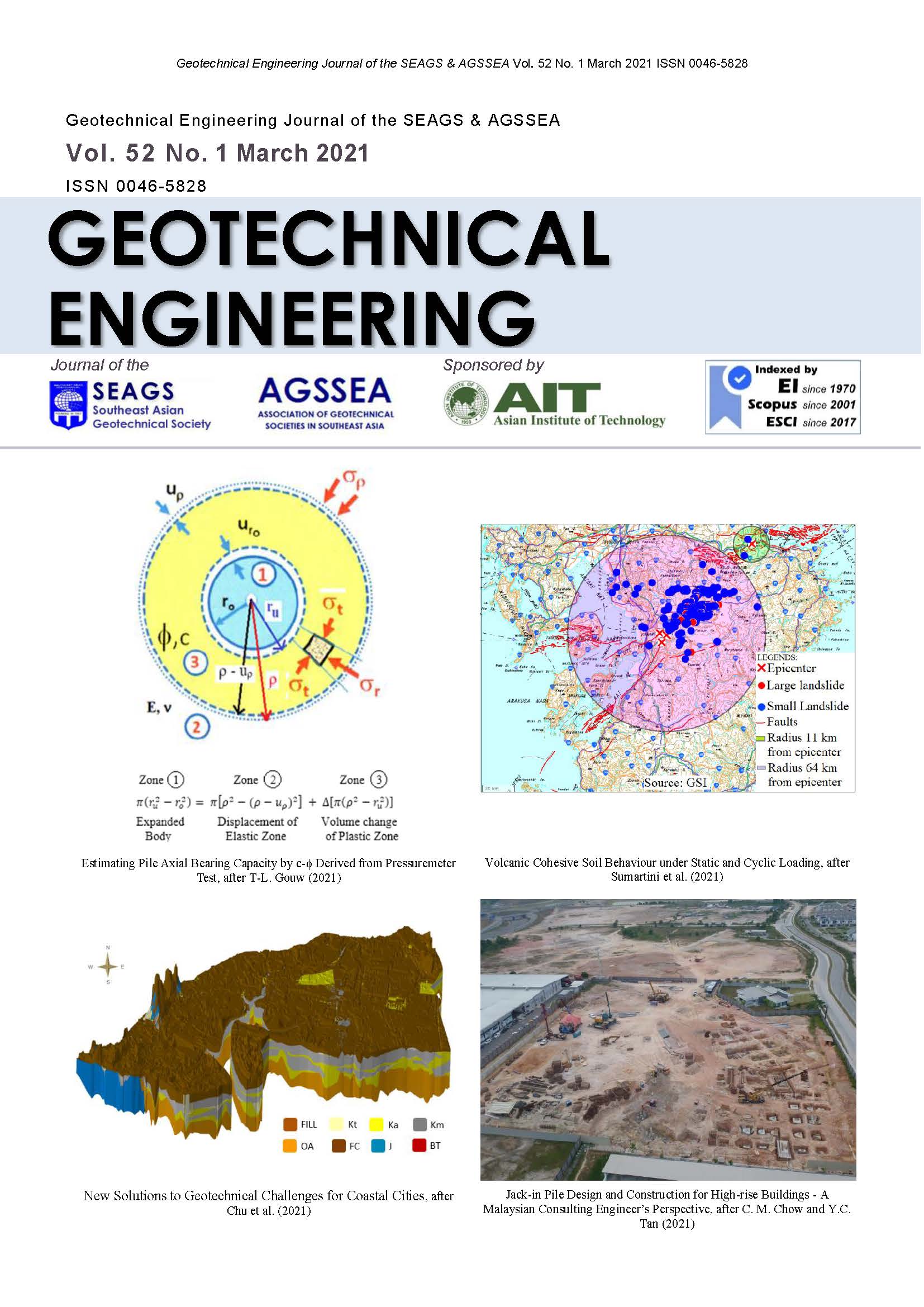Performance of Helix Piled Raft Foundation in Tropical Fibrous Peat Soil Under Traffic Loads
Main Article Content
Abstract
This paper presents the investigation of settlement based performance of helix piled raft foundation under traffic load through analytical and numerical methods. The analytical method is based on the concept of PDR analysis of piled raft where the stiffness of helix piled raft is computed from the stiffness of helix pile and raft with a certain helix piled – raft interaction factor. In this study, the stiffness of helix pile to peat soil is estimated by using a modified Randolph and Wroth equation, incorporating the mechanical behavior of helix pile. On the other hand, the stiffness of raft is determined by using Richart et al equation. In the numerical model, 3-dimension FEM model of helix piled raft is undertaken in which helix pile is modeled as fixed end anchor, and raft as a plate above soft peat soil. The effect of helix pile number on the bearing capacity and settlement of helix piled raft foundation system is investigated. The results reveal that the stiffness of helix pile is too small compared to the stiffness of raft with the ratio from 1/6 to 1/4. The helix pile stiffness is much influenced by the number of helice and the radius of helice in a single helix pile. Since the stiffness of helix pile is small, such critical number of helix piles is needed to have effect on the foundation system. Below this number, helix pile is insignificant to have effect in the helix piled raft foundation system, and the elasticity of the raft plays important role. In general, however, it is obvious that the increasing number of helix piles can decrease the elastic settlement of helix piled raft foundation when it is subjected with traffic load. In the stiffness ratio of helix pile to raft...
Article Details

This work is licensed under a Creative Commons Attribution-NonCommercial-NoDerivatives 4.0 International License.
Copyright © 2019 Association of Geotechnical Societies in Southeast Asia (AGSSEA) - Southeast Asian Geotechnical Society (SEAGS).


